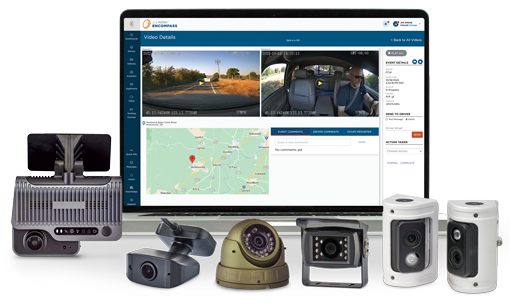Sr. Transportation Safety Editor — J. J. Keller & Associates, Inc.
Using the Safety Management Cycle to Avoid an Off-Site Audit
FMCSA is expanding its use of “off-site” audits, but you can avoid one. Learn more.
Published On: 02/28/2020


Written by:
Daren Hansen
FMCSA is significantly expanding its use of “off-site” audits, but you can avoid one by approaching your compliance program in the same manner as the auditors do.
What Are Off-Site Audits?
Off-site audits, sometimes called a “desk audit,” take place at the enforcement agency’s offices. This type of audit allows the agency to review more companies than it otherwise might be able to, as auditors can perform multiple off-site reviews at the same time.
Off-site audits, which began as a pilot program and has slowly expanded across the country, arose in tandem with the Compliance, Safety, Accountability (CSA) program. CSA provides enforcement agencies with a prioritized list of the motor carriers with the worst safety records so that they can be targeted with audits and investigations.
How to Prepare for an Off-Site Audit
As a motor carrier, you should be prepared if you receive a notice of an off-site audit. Of course, auditors look for violations of the safety regulations, but they want to understand why violations are occurring and what needs to happen to prevent future violations and crashes.
In part, auditors rely on the Safety Management Cycle (SMC) to help them determine what safety management processes might be breaking down, why they’re breaking down, and how they can be fixed.
Choosing to use the SMC now puts you on the right path to avoiding an audit entirely, and at a minimum, prepares your compliance program in case FMCSA selects you.
6 Components of the Safety Management Cycle
The Safety Management Cycle evaluates six areas of your operation to find the root of any compliance problem:
- Policies and procedures - This area covers your established guidelines and expectations and your plan for how to accomplish your company’s safety-related policies.
- Assigned roles and responsibilities - This area defines what each employee should do to implement your policies and procedures.
- Qualification and hiring - This area defines the practices you use to recruit and screen applicants to fill open roles.
- Training and communication – This area defines the ways you ensure employees know and understand your policies and procedures, and are competent at performing their assigned roles.
- Monitoring and tracking – This area defines the methods you use to review employee performance and ensure compliance.
- Meaningful action – This area defines your responsive actions, based on monitoring and tracking, to improve behavior and overall safety.
Consequences of an Off-Site Audit
An off-site audit that reveals extensive problems can escalate into an on-site compliance review. A poor compliance review can result in an Unsatisfactory safety rating, significant fines, higher insurance rates, harm to your public image, and the complete loss of your right to operate commercial vehicles. That’s good incentive to use the SMC to build a rock-solid compliance program in place before you show up on the DOT’s radar.
Get Our Complete Guide to Off-Site Audits
Learn more about how an off-site audit is conducted and how you should respond with our FREE guide. Plus, receive a complimentary Compliance Review with one of our Compliance Specialists. Free download.
You may also enjoy the following articles:
Sign up for our newsletter!
We'll help you stay on top of regulations, best practices, and fleet industry news. Sign up to receive a monthly email notification with links to our most recent blog articles, free resources, and event invites.
